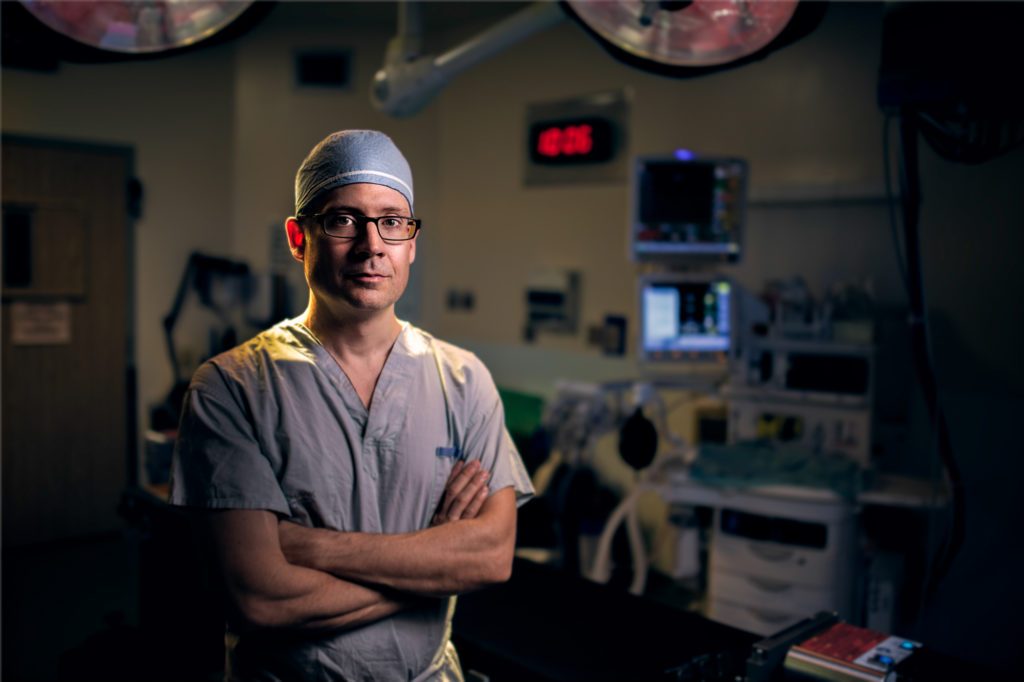
The stubborn pursuit of “Why”
By: Dr. Richard Whitlock
Cardiac surgeon, Hamilton Health Sciences
Principal investigator, Population Health Research Institute
Associate professor of surgery, McMaster University
I entered medicine with the aspiration of impacting people’s lives; I think most physicians do. The opportunities to comfort, to cure, to make lives better; these were motivation to endure the long process of becoming a physician and, eventually, a heart surgeon.
Like any other physician, I’ve experienced the losses of dear patients. Sometimes, I’ve felt that I failed them. But overall, my first decade of independent practice has been extremely satisfying. There is little better than receiving a grateful hug from a family member after you operated on their loved one.
It wasn’t until I began my residency training that I realized the added satisfaction that clinical research could bring to the work I was already doing as a physician. It posed challenges that were very different from those of clinical practice, but with the same purpose of clinical care: to improve people’s lives.
Once that research bug has bitten, the realization soon comes that, instead of helping one patient at a time, a clinical researcher has the opportunity to impact tens of thousands of lives.
Clinical work is something that chases a physician; the moment you walk through the hospital doors, it’s almost impossible to escape the hustle of the health system. Research, on the other hand, requires you to chase it. It starts with asking an unanswered question, but will easily end if it’s not approached with a stubborn unwillingness to let it go. Finding good, reliable answers to big research questions is an elusive pursuit. Many things are required to enable research to happen – it’s a bit like assembling a puzzle, and it requires the support and expertise of many people and resources. But once that research bug has bitten, the realization soon comes that, instead of helping one patient at a time, a clinical researcher has the opportunity to impact tens of thousands of lives. When I experienced that epiphany, I began exploring even more. I became more aware of the gaps in knowledge in cardiovascular care. Identifying gaps is the first step in improving care for patients, and I began to notice the impact of these gaps on the patients I was treating. My questions continued to grow, as did the size of studies I was undertaking to answer them.
Naturally, my network of fellow research colleagues also grew: collaboration is key to research. I have had the pleasure of working with many talented researchers from over 30 countries, many of whom I now call friends. This large network that has formed as the result of questions that my colleagues and I have posed is unique in surgical research. It’s something that my research team should be truly proud of. In this network, we’re now answering questions that will have dramatic impact on tens of thousands of patients globally, in my lifetime. Together, we’re addressing the gaps in knowledge that affect the patients we care for every day. We’re actively working on finding ways to prevent strokes, to minimize common complications after heart surgery, and to ensure that available medications are used in optimal ways.
The child in me still exists, constantly asking “why”
This is why I love research. The child in me still exists, constantly asking “why”.
With the motivation and momentum of our vast research community at Hamilton Health Sciences and beyond, I have the satisfaction of helping to find answers to these questions every day. Answers that change one life at a time with the use of a scalpel and a surgeon’s hands and, at the same time, hundreds of thousands of lives that our hands will never actually touch.
